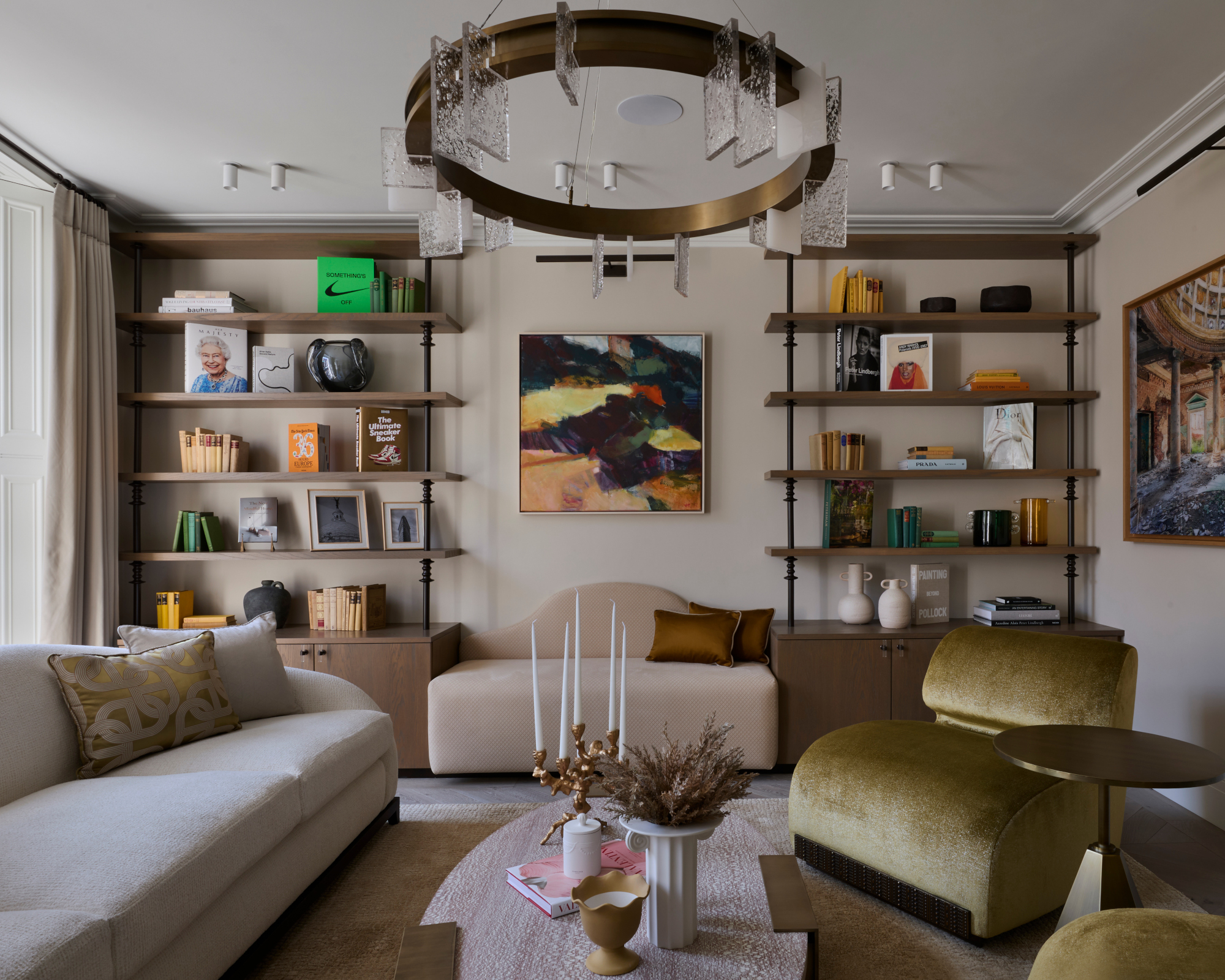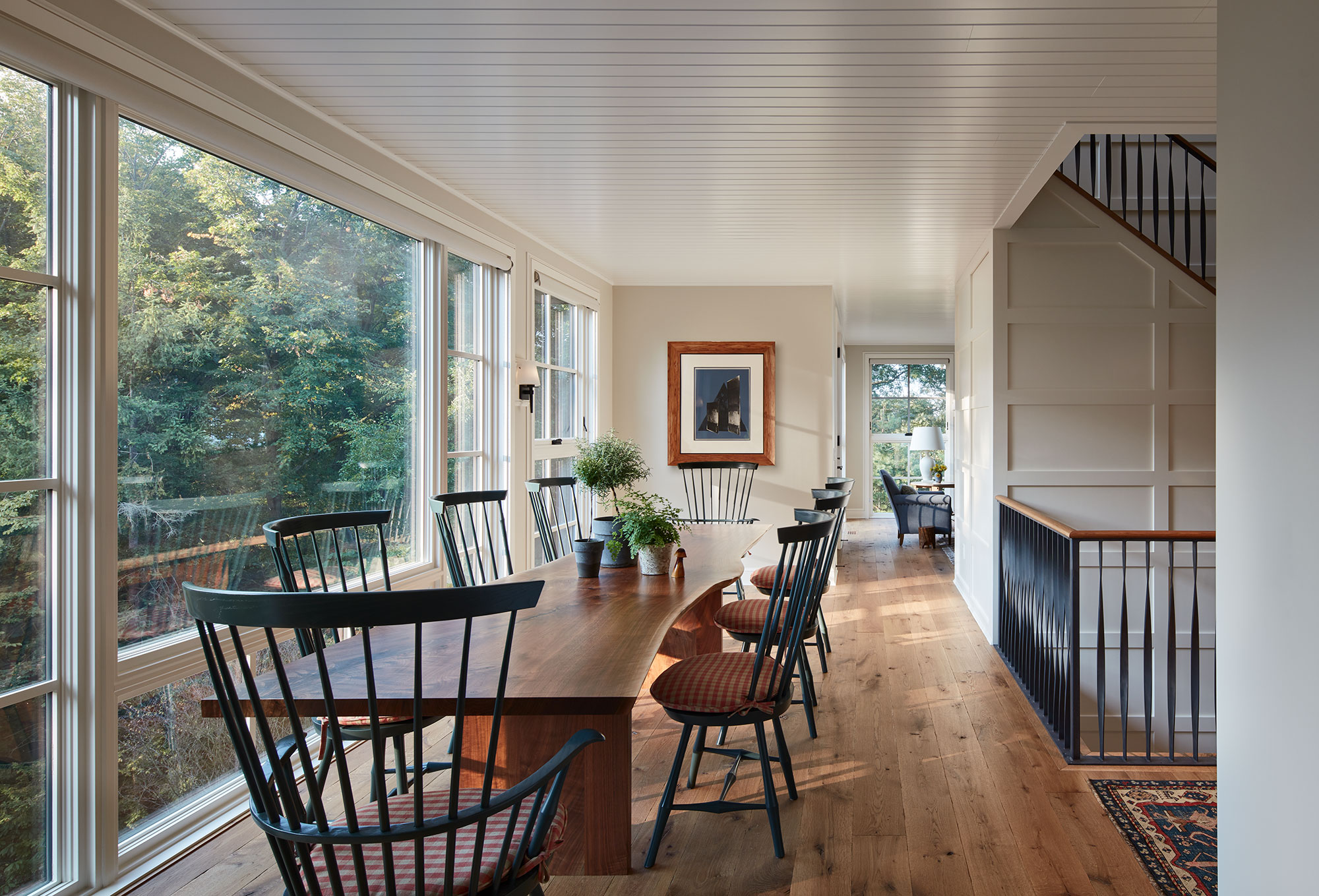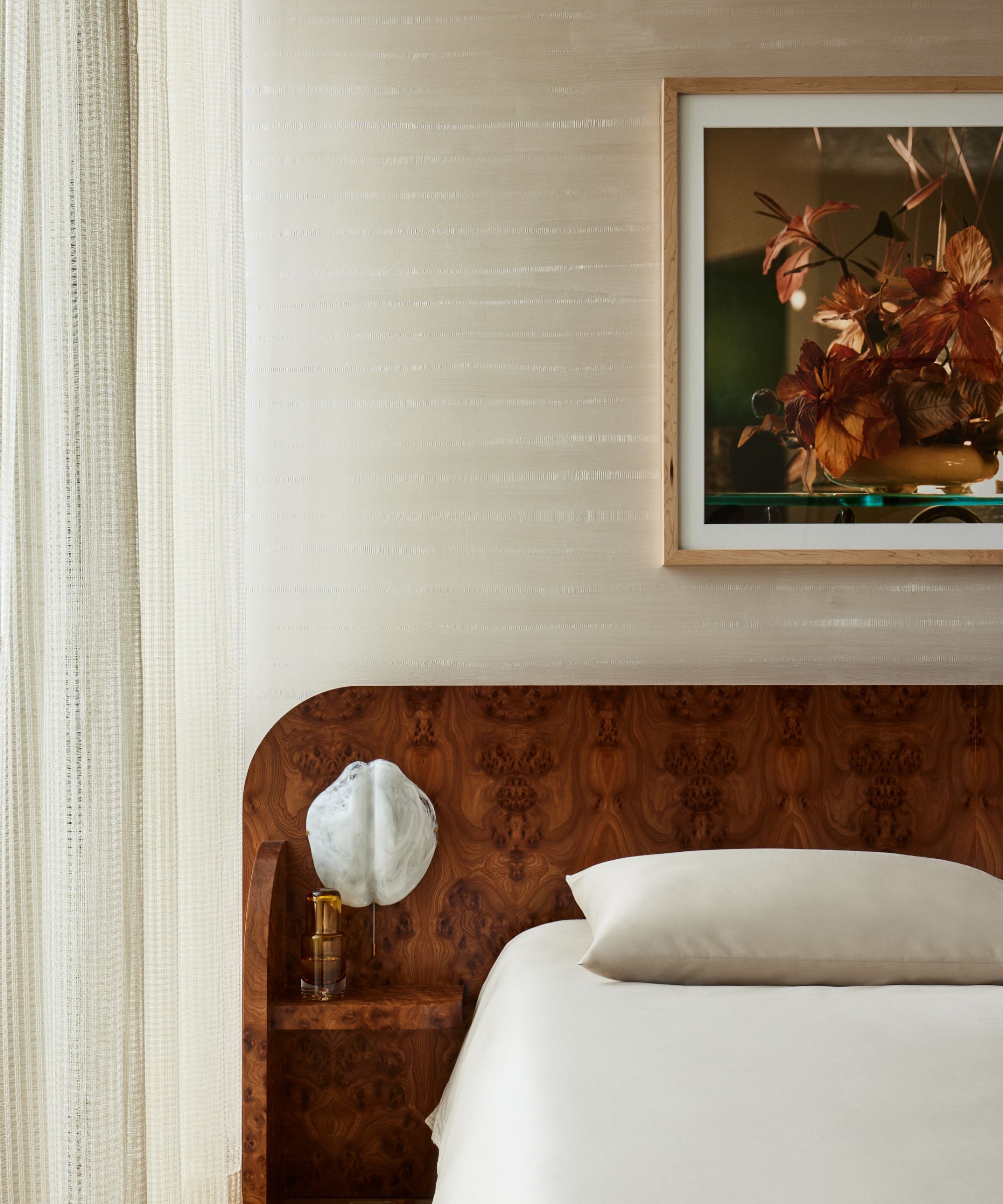This 3-step formula for how high to hang pictures will help you nail it – literally
'What is the correct height to hang a picture?' I can answer that question definitively with this simple formula – and tell you when to break the rules, too


How high pictures should be hung isn't something you consider until you notice someone has got it wrong. I have friends whose living room always feels a little 'off' and I couldn't put my finger on it until I realised that their pictures are hung way too high, too close to the ceiling, and too far from the furniture or floor below. The result? The room feels a little cold and somewhat disconnected.
I'm not saying I always get it right, and it's maddening when I hang a picture in the wrong position – too high, too low, whatever – especially because I've made a hole in the wall that then involves tiresome DIY to cover up, so I was delighted when I discovered that there's an actual formula for how high to hang pictures.
It sounds complicated but bear with me: you divide the height of the frame in two. Then take that number and subtract the measurement from the top edge of the frame to the hanging point. Take this number and add it to anywhere between 57, 58, 59, or 60. The result, in inches, is how high to hang a picture with no furniture beneath.
Want a simpler formula? Hang pictures at eye level (the average eye level, not your eye level – this explains my friends' picture hanging mistakes because they are really tall), so that the center of the picture is around 57in above the floor.
Below, I break that down a little more – tell you how high to hang a picture above furniture, and the wall decor ideas and exceptions I discovered, too.
1. Use picture templates to get hanging height right

Whenever I am hanging pictures, especially when creating gallery wall ideas, I find it is always best to create cutouts of my frames using spare wallpaper or backing paper.
I will use these templates to mark where the hook or string on the reverse of my frame sits too, allowing me to visualize exactly where I need to add my nail. I have made far fewer mistakes with my template method than trying to measure the approximate distance between the top of the frame and the hook.
Design expertise in your inbox – from inspiring decorating ideas and beautiful celebrity homes to practical gardening advice and shopping round-ups.
Nothing ruins decorating with art like the wrong hanging height for the size of the frame, so these easily moveable templates are easy to tack to the wall and reposition before I commit to adding the nail. What is even better is the nail mark on my template makes adding this nail even easier.
My templates also work to space my pictures out if I am hanging multiple all at once. The general rule is to leave it around two to three inches between the frames, so using the moveable templates makes playing around with this spacing super easy.
I've tried this idea above, too: taking a photo of the wall then dropping in dummy templates of the pictures to see how they look.
2. How high to hang a picture on an empty wall

How do I fill a large living room wall? With a big picture or gallery wall, of course. But how high to hang it?
I knew already that pictures are usually hung around eye level (or around 57 to 60 inches from the floor), but let's get back to that formula. For math fans, it is:
([Height of the frame/2] - [distance between the hanging hook or string]) + 57, 58, 59, or 60 inches = height at which to add nail.
Let's put that into language non-math fans can understand (me included): say your frame is 40in high. Divided in two = 20in. The fixing sits at 5in from the top of the frame. Subtract that from the 20in = 15in. Add this to 57in, and the picture should be hung at 72in from the floor.
And in the case of a gallery wall, this is where the central picture should be placed.
This is where I tack my templates to the wall to double-check that the nail mark on the template lines up with my measurement and visualize the placement before committing to adding the nail.
3. How high to hang a picture above a piece of furniture

I have discovered through trial and error and repeatedly rearranging my templates on my walls that, as a general rule, pictures look best when the bottom of the frame is placed around four to eight inches above the top of the piece of furniture.
Any higher and the artwork feels disconnected to the furniture, which is why my friends' picture hanging is such a disaster – the pictures feel more connected to the ceiling, which makes the room feel the opposite of cozy.
This formula works wonders whether I am hanging a single piece of art or a gallery wall. And it works whether I am hanging pictures above a sofa, headboard, or buffet.
However, I always check with my templates before I commit. I measure eight inches from the top of my furniture, make a small mark on the wall with a pencil (I always make this mark light enough that it can be erased). I finish by lining the bottom of my template up with this line and tacking it to the wall. The nail mark I add allows me to perfectly position my frame.
I find that this method also works when hanging pictures above a mantel and even backsplash tiles for kitchen art ideas too, making it a truly universal, virtually risk-free way for working out how high to hang pictures.
When to break the rules on picture height
Though this formula is generally really successful, not all pictures should be hung at the 57in mark. Sometimes, you might have architecture within the room – whether a window frame or shelf – that it is pleasing to line the frame up with. Perhaps your ceilings are really high and your furniture is tall, too, which means you will need to adjust that magic formula to suit what looks right. Templates are your friend here, so that you can work out what looks right where, without making a single nail mark.
Should all pictures be hung at the same height?
While there are general guidelines as to how and where to hang pictures, each piece of art or frame is unique, meaning that you do not necessarily have to hang pictures at the same height as one another if you do not want to or do not like the look. Instead of trying to use an exact formula – that a picture should always be hung around 57in high at its center – using paper templates and stepping back to see what looks right in the space is often the best way to get all pictures at the right height, whether individually or as a grouping.
Where should you not hang pictures?
It is best to avoid hanging pictures in direct sunlight, as this can cause them to fade over time. This is particularly true for pieces of artwork that are much more difficult to replace and may even crack or warp over time.

Chiana has been at Homes & Gardens for two years and is our resident 'queen' of non-toxic living. She spends most of her time producing content for the Solved section of the website, helping readers get the most out of their homes through clever decluttering, cleaning, and tidying tips. She was named one of Fixr's top home improvement journalists in 2024.